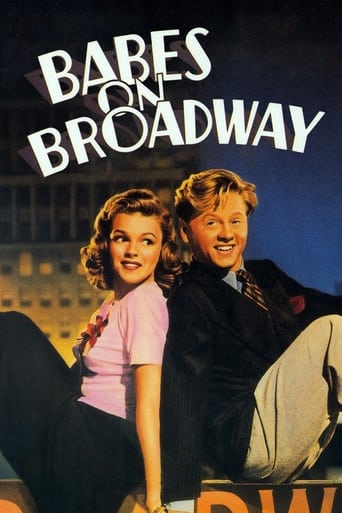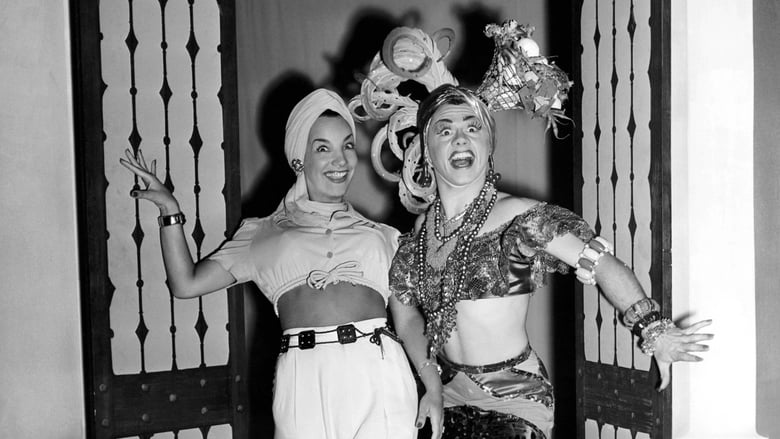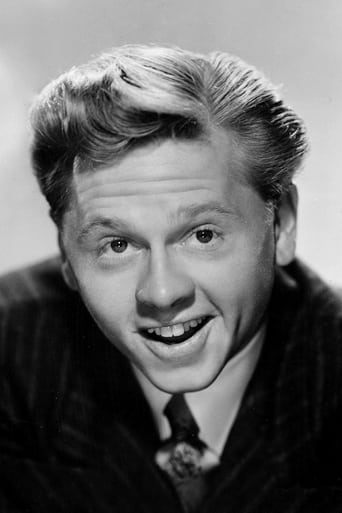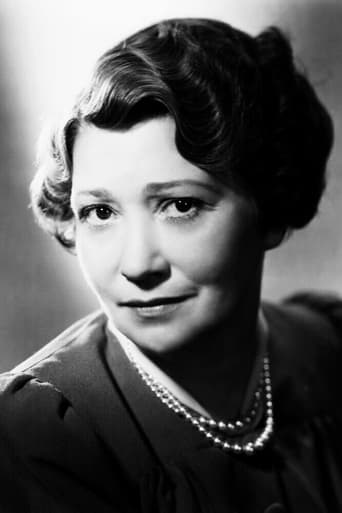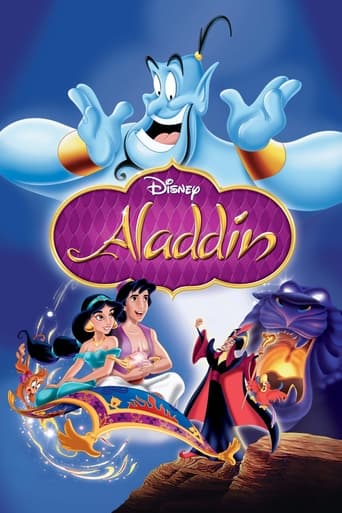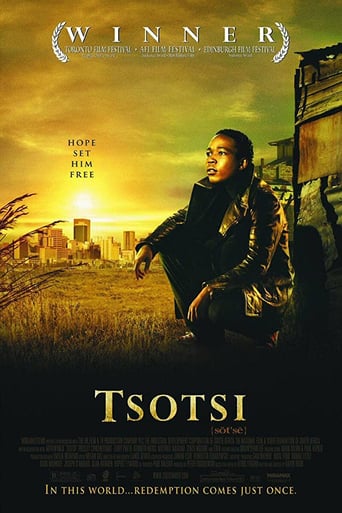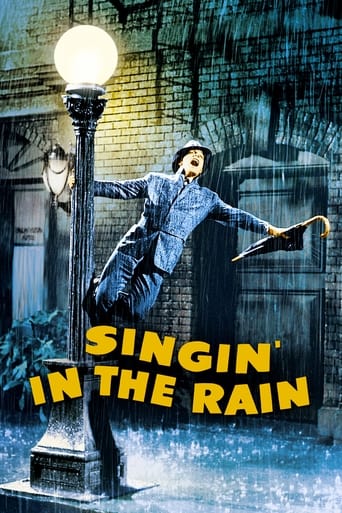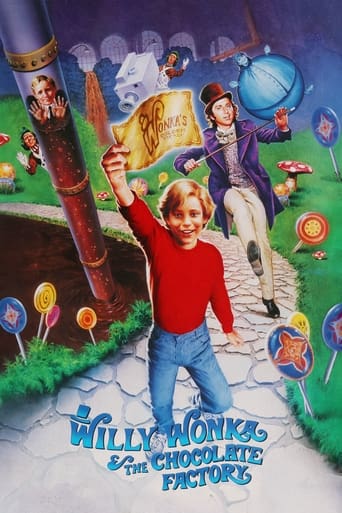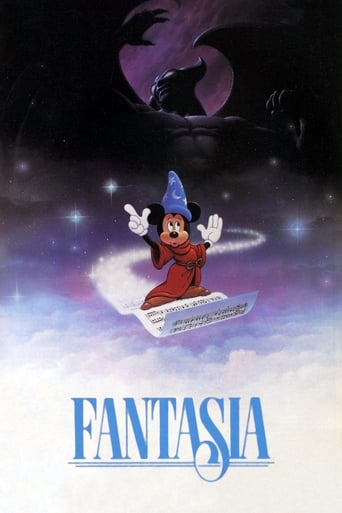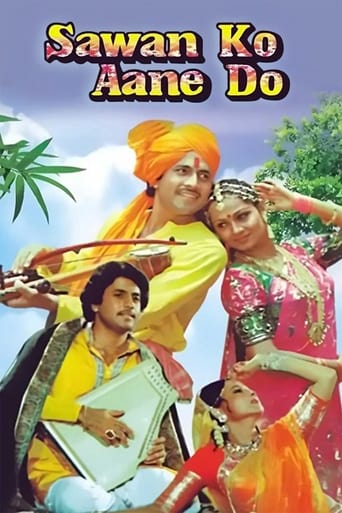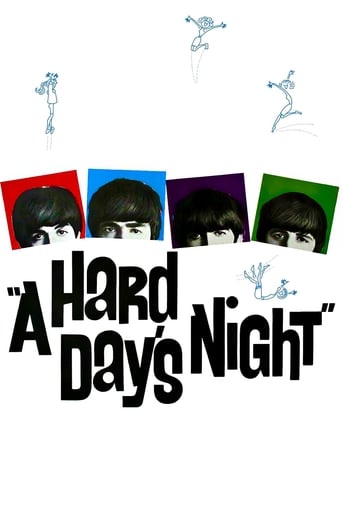Babes on Broadway (1941)
Penny Morris and Tommy Williams are both starstruck young teens but nobody seems to give them any chance to perform. Instead, they decide to put up their own show to collect money for a summer camp for the kids.
Watch Trailer
Cast


Similar titles
Reviews
Such a frustrating disappointment
Good films always raise compelling questions, whether the format is fiction or documentary fact.
It's the kind of movie you'll want to see a second time with someone who hasn't seen it yet, to remember what it was like to watch it for the first time.
The film never slows down or bores, plunging from one harrowing sequence to the next.
"Babes on Broadway" was a very popular film and was just one of several similar Mickey Rooney films of the day. However, while wildly popular in the day, this sort of movie has not aged well and I found it very tough to finish the picture.Tommy Williams (Rooney) is a member of a young trio that sings and dances. He exudes confidence and knows they'll make it big on Broadway...but for much of the film his plans keep falling short. So, without any other options, he agrees to put on a show with his new pal, Penny (Judy Garland), as well as other young people with loads of talent but not much in the way of work. But, just before this big performance Tommy gets news that he's got a job...but can't do it AND the benefit performance. What's he to do?The biggest problem with this film is that there is hardly any plot and instead it consists of one musical number after another after another. Additionally, with several very, very similar other films starring the same duo and with similar plots, it's hard to take this very seriously or care about the characters. All in all, it's a film that tries too hard. Less singing and dancing and more heart...that would have improved this film tremendously...at least for audiences in the 21st century.
I have one nitpick, the blackface routines near the end of the film. And the characters in this film chose to do a minstrel number just because they wanted to. At least in "Everybody sing", Judy did a blackface routine in that film because she didn't want her eccentric parents to recognize her because they were trying to ship her off to Europe. It was that era's biggest downfall. That downfall isn't such a problem today, but there are plenty of new ones now that weren't around then. Actually, people were nicer and more decent in almost every way back then compared to today with the big exception being racism. And I'm sure that many good hearted people of that time only acted racist because they were taught to and were pressured to by the smaller percentage of people that enforced racism to be part of that era's society. Anyway, the blackface numbers in this film is why I subtracted two points. All of the other parts of the film, I rate a 10. They were just as terrific as the other Garland/ Rooney musicals. I love Judy Garland. I love the singing, the sentiment and the passion in "Babes on Broadway". In some other reviews I've read on this film, they don't. I can understand them not liking incessant singing and dancing if it isn't that good. But with Judy Garland, it's wonderful. I like sentiment and passion in the innocent style of 1930s and 1940s musicals, and it was also more around back then in real life. And I love the way Judy displays it in her films. Judy, who was 19 in this film, sang "How about you" beautifully while dancing with Mickey in her apartment. I find it sort of similar to "Our love affair" in "Strike up the band" with her and Mickey and "Me and my gal" in film of the same name with her and Gene Kelly. "Chin up, cheerio, carry on" was also great. She sings her songs like an angel. And " chin up, cheerio, carry on" has an added wonderful touch to it with Judy taking care of the English children there escaping the blitz in WW2 England from Germany. It really tugs at the heatstrings and touched nerves on those who lived through WW2. I also liked the few theatrical numbers in this film that Mickey and Judy acted out to legends such as Sarah Bernhardt (who's been mentioned a lot in films during this era including in Judy's "Presenting Lily Mars"). The theatrical numbers here beared some similarity to the ones in "Strike up the band", except there it really happened in the story, here it was in Micky and Judy's imagination. The motive for Mickey, Judy, and the others putting on their block party so they could take the English children to the country was a nice touch. Many people today I'm sure will wonder what the big deal is about going to the country. I believe it was that smaller more simple pleasures in life pleased people more back then. Today, everyone feels entitled to so much more in order to feel satisfied, and takes things a lot more for granted. Back then, it was a real treat for poorer people who never before left the urbanization of the city to spend time riding through open fields, hills, and pastures. And to walk through babbling brooks and feel the wide openness and smell the fresh air of the rural beauty.
Very famous dances and dancers. 'Hoe Down'. Judy a great dancer; she had very smooth and well timed technique. Mickey as type of Carmen Miranda, swaying and sashaying. Minstrelsy spectacular had great dancing, even though racist by today's standards. I loved all the front row men tap dancing while sitting in chairs. Minstrelsy was big in real life in around the 1880s, and I feel that some of the routines were respectful to African Americans -- yet some character dialogues were just a little too stereotypical. Maybe the minstrelsy part could not be made today.Ray McDonald had fabulous dancing. He always did, including in "Till the Clouds Roll By" with June Allyson. I guess there was not enough room in the movie dancing field for his talents, what with Fred Astaire, Gene Kelly and the later blossoming of Bob Fosse, Bobby Van, Tommy Rall, et al. In early 1941, the U.S. had not yet entered World War Two, but 'Fritz' was bothering the Europeans. The Great Depression was ending (and maybe studio budgets were now higher), but it seems that great dancers had to make room for the greatest superstars. Even Frank Sinatra was taught to tap dance.In a similar vein, Judy Garland IMO took the place of Deanna Durbin and Shirley Temple, regarding singing and dancing. There was not enough room in the superstar heaven for all three, and Judy always won out. If they all three helped take the U.S. through the Depression, and helped make big money for the studios, in the end only one major star (Judy, I feel) was affordable. Mickey Rooney (RIP) always felt Judy was used and abused, and yet Durbin and Temple must have always felt cheated because their careers were short-circuited. Remember that Temple was supposed to be Dorothy in "The Wizard of Oz". It seems that after that, her career downslided, World War Two was coming, and Judy was left to carry the 1940s musicals a lot. I don't remember Shirley singing and dancing in "Fort Apache".Look again at Mickey Rooney. He went into the war. When he came out, his career had to be kickstarted again. Gee-Gosh-Dad-Andy-Hardy was a thing of the past. Mickey managed to stay within the entertainment industry in one way or another, and later acted in character parts. I saw him in "Night at the Museum", and I thought that he was excellent.Mickey and Judy in "Babes on Broadway" were fabulous. They always seemed to play well against and with each other. Their costuming was wonderful and at times hilarious. I especially liked the 'ghost sequences' in this movie, where they portrayed Richard Mansfield, Fay Templeton, Sir Harry Lauder, Sarah Bernhardt, George M. Cohan, et al.10/10
If you like fast paced Hollywood musicals from yesteryear, then this movie is for you. The story is dated and hokey, but there is a lot of singing and dancing. Mickey Rooney, Judy Garland and the rest of the cast is excellent. Rooney demonstrates his versatility as a song-and-dance man and pairs well with Judy Garland who sings several songs and is quite engaging. The finale includes a several-minutes long minstrel sequence which some may find insensitive as it is performed in black face. That notwithstanding, Garland performs a number in black face and in drag (i.e. dressed as a male), which is remarkable. The cinematography is excellent, capturing the dance sequences in all their glory. If judged by current tastes, the movie's style is a curio, an antique. But what is not dated is the energy, vitality and the music itself which would resonate with today's audience.

